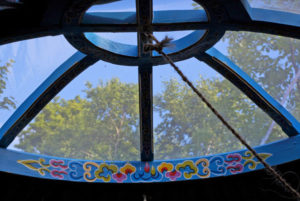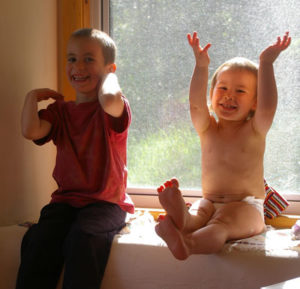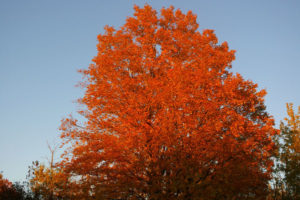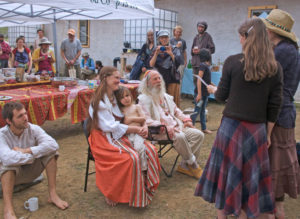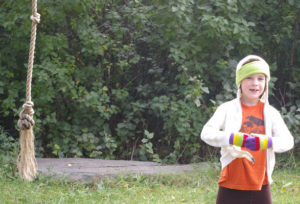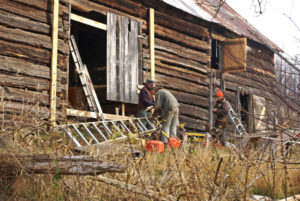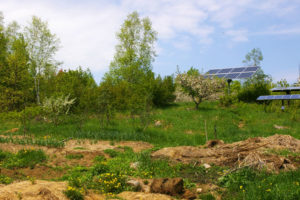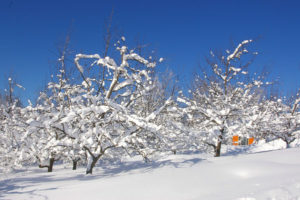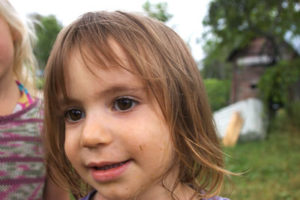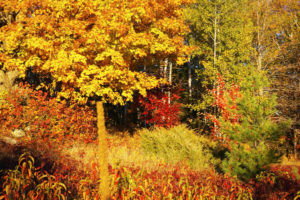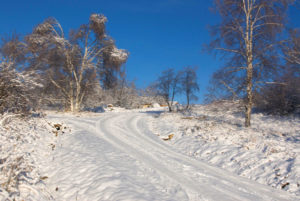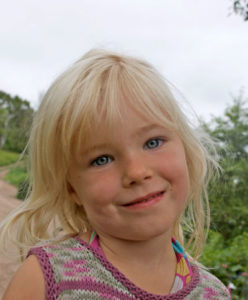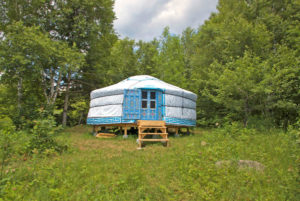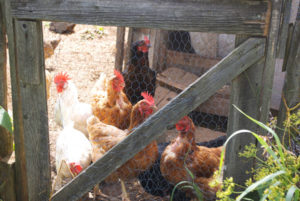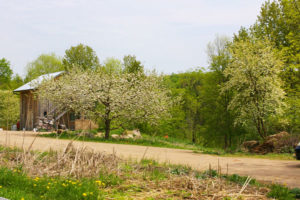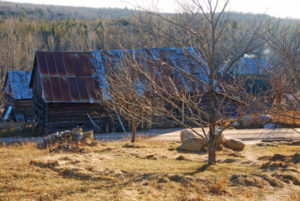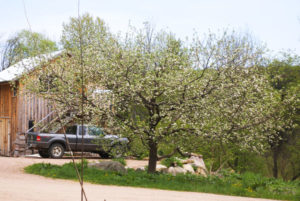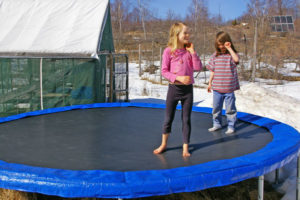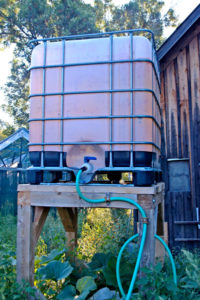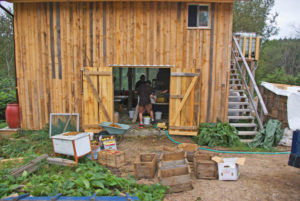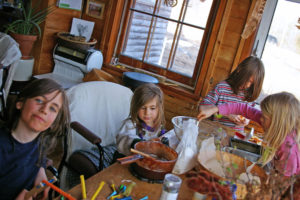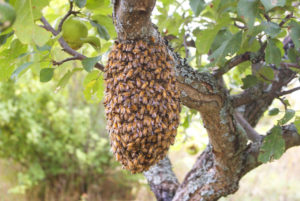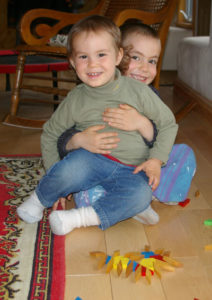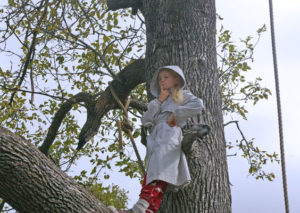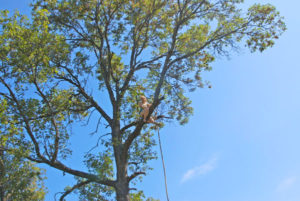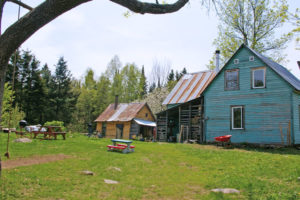Morninglory • Killaloe, Ontario, Canada | Mission Statement: Live simply, respect all Life.
Morninglory is a community where:
1) We have the freedom and opportunity to grow and flourish through living our individual and collective dreams, and
2) We share a commitment to cooperating with, understanding, respecting and caring for one another, the land, its inhabitants and the natural rhythm of life.
Community Description
We are a village of separate households of single people and families scattered over 100 hilly wooded acres. We homestead in varying degrees, living off-grid using some solar electricity and heating with wood. We grow organically much of our fruits and vegetables; some eggs and meat. We’ve spent 52 years learning how to be good neighbors, which has been a worthwhile process.
Most of our children were home birthed and are homeschooled — ages four years to eighteen. Swimming in our pond, trampolining, tobogganing, snowshoeing, folk dancing, ecstatic dancing, crafting/mending nights, new-moon women’s circles, music jams, and potlucks are some of the things we do for fun. We all share a love of nature, music and the arts.
We are a multi-generational community. We are all involved with the surrounding and supportive rural community in varying degrees.
In order to live in harmony with Mother Earth and each other we are learning and practicing: Organic, regenerative, permaculture gardening and animal-raising, composting, Humanure composting, sustainable forestry, carpooling, cooperative food buying, non-violent comunication, light footprint on the land.
May all people find harmony with Earth and each other!
Morninglory people value:
- Co-operation for mutual benefit.
- Fairly shared community responsibilities and expenses.
- Learning and practicing empathetic and honest communication skills: learning and expanding a consensus based consciousness, practicing consensus based decision making at our meetings and increasing our skills in inclusion, listening and caring.
- Honesty and integrity, transparency.
- Ecological, efficient, healthy building practices: Well-insulated and well sealed buildings, taking advantage of southern exposure (passive solar heat and light gain), natural and local building materials, renewable energy, rainwater collection, efficient and minimally polluting heatstoves/heat sources, etc.
- Ecologically friendly waste management (recycling, composting, repairing, re-use, no littering, picking up after yourself, etc.)
- Sustainable participation in nature’s abundance: maintaining the integrity of natural systems and cycles in our lives, supporting homegrown and local sustainably produced food, fuel, lumber, fibre, energy, medicines, and skills, and fostering healthy interconnected local and regional systems of trade and communication.
- Respect and kindness: towards ourselves and our neighbours (human, animal, plant, all life).
- Gender equality: work towards gender equity, help everyone feel safe and reach their full potential.
- Freedom: feeling free to fully explore and express our authentic selves.
- Having fun!
If you want to visit…
We are not receiving visitors or residency requests at this time, thank you. Wishing you good health in community.
Back To the Land in Killaloe • 1968–2008
by Robbie Anderman and Karen Schimansky, written in 2008
“I do not want to live what is not life. Living is so dear.” —Thoreau
In the late 1960s, land prices in the Killaloe area were severely devalued. The traditional small mixed-farming way of life, which had sustained the original settlers, had been undermined by government agricultural policies. Many of their children had moved to the cities to earn a livelihood, leaving empty homesteads.
In the beginning, it was like a whisper….
They came from near and far. For many it was by chance. Others heard through the grapevine that “a happening was taking place.” Some even came to follow-up job ads. The years from 1968 through the 1980s were to see thousands of young folks moving “back to the land” in droves. The attraction of cheap properties and the beauty of the treed and wild flowered acres were like a sweet elixir calling to them. Organic growing, communal living and community involvement were part of the culture being created. They learned to live simple lives, use their creativity and work hard to achieve their dreams. There was a huge diversity due to geography, interests, economics etc. And so it began…
In November 1967, Doyle Mountain Farm was bought by Erika Neuman from Germany, and Dalton McCarthy whose relatives had originally owned the farm. They returned to Toronto for the first winter.
The following spring, on the first of May, 1968, Erika returned to Doyle Mt. with Mario Langois, from Northern Ontario, and made it their home. Dalton stayed temporarily in Toronto, encouraging people to ” Move to the country!”
Erika and Mario welcomed many visitors to Doyle Mountain. Those who couldn’t fit into the farmhouse or didn’t want to camp, were helped to find their own farms.
The first summer saw many musicians and artists (several famous ones) visiting Doyle Mountain. Clean fresh air and the quiet of the remote hills encouraged creativity.
Some friends of Doyle Mountain, Chas Estes and Jackson Sagness moved into a house in Killaloe for the winter of ‘68–‘69. They opened their home as a landing spot for people from “away” to begin the search for their own homesteads amidst the deep snows. The next summer, Barney and Pat McCaffrey and sons moved into that same house in Killaloe.
By late March 1969, Al and Leslie Morgan had settled Oak Ridge Farm, the Ambrose Yantha homestead, just Northeast of Doyle Mountain, and Mike Nickerson and Robbie Anderman moved onto Morninglory Farm, the old Paul and Agatha Beanish homestead, another mile north of Morgans’.
Gardening began almost immediately in the organic way; with kind neighbours reopening the old homestead gardens with horse and plow. Most farms already had mature apple and plum tree orchards, perennial foods like wild strawberries, raspberries, blackberries, asparagus, rhubarb, and nettle, and lots of wild greens for salads.
Moving into a way of life where nature and the seasons were so present and a controlling factor, it seemed obvious to celebrate the arrival of summer with a Solstice party on June 21, 1969 at Morninglory Farm. The Morgans came on horseback. The growing number of Doyle Mountain people came in a van full of food and instruments. When the rains came, the farmhouse was filled with music. When sunshine returned, we all climbed to the hilltop to gaze in wonder at the bright rainbow arching over the Bonnechere Valley spread out to the east, a sign of bright times to come….just like the bright colourful Summer Solstice rainbow of 2008.
Blackflies and mosquitoes emerged from their winter hibernation, greeting the newcomers. Still, more people left their former homes and families and came to the Killaloe area to see for themselves what nature and the land had to offer.
Many left behind materialistic, crowded, and competitive urban lifestyles, seeking a new way of living. Some were American draft dodgers leaving behind the family and friends they might never see again. Many were overeducated and under skilled.
Farms without electricity were even less expensive and required living the old ways; reading by candle or kerosene light, carrying water from a well, chopping wood and relying on an outhouse. Using a woodstove for cooking, baking, canning and drying food became a way of life. Learning to farm and raise animals required new skills, and often brought some people’s dreams face to face with reality on a level they had not imagined.
A fresh breath of air, filled with the many new cultural approaches to life, came into the hills and valleys with these new settlers: rock, folk and jazz music, arts and crafts of numerous kinds, theatre, ecological awareness, increased consciousness of organic and natural foods, flamboyant, colourful and comfortable clothing, and new ways of learning about life itself.
More people kept coming, filled with optimism and enthusiasm, many in the first flush of youth in their late teens and early twenties. Some camped out or slept in haylofts. By the second winter of 69–70, many of the campers gathered together as Sahajiya Community (“Born Together”) and rented a big old farmhouse on Johnny Cybulski’s homestead overlooking Round Lake. It was here that Brent Titcomb wrote Anne Murray’s hit “Sing High, Sing Low” and the song “Sahajiya” which he recorded on his first album.
Morninglory turned the old milk house into a sauna. All through the winter of 69 – 70, once a week, all the new settlers were welcomed for a good hot sauna bath, followed by music and food. It helped draw people together into a common Whole.
In several cases, people joined together to buy farms to share the costs and live communally, giving them names such as: Doyle Mountain, Morninglory, Sahajiya, Straw Farm, Mimosa, Echo Farm, Holsum, Raphael, Rochdale Farm, Heaven, Mustard Seed Circus Farm, and Cloud Mountain.
The summer of 1970 saw geodesic domes beginning to be built on Doyle, Morninglory, and Sahajiya (at their new farm near Rochefort). Unique and innovative housing designs materialized all over the hills and valleys.
The Fall and Winter 1970 issues of the Canadian Whole Earth Almanac had photos and tales about Morninglory and Killaloe amidst articles of how to live on the land. This drew more attention and people to the Killaloe area, as did the first issue of The Mother Earth News, which had an article about Morninglory and an ad from Barney McCaffrey inviting people to move to the Killaloe area.
Everyone soon learned, like the first European settlers in North America, that survival was impossible without help from the local people. What kind helpful friends, neighbours, and business people we found all over this area. Thank you!!!
Over the years, as the new settlers had children, three different alternative schools and lots of home learning emerged. First came the Killaloe Community School, then The Living School, and then the Killaloe Alternative School, which rented the former one room schoolhouse in Old Killaloe for ten of its 13 years. Other new settler families helped fill the local public schools and their school buses.
In 1976, the Killaloe Craft and Community Fair began. On the hilltop farm of Fern and Gina Zadra (the O’Connor homestead), the Fair offered music, theatre, and children’s activities, along with crafts, survival skills and healing arts workshops. Three years later, the Fair “Community” bought a farm a mile to the east,
The Fair celebrated 13 years as a three-day event, then closed for several years. It re-emerged with younger organizers as a one-day event for several more years. There is a new surge to revive the Fair, with new infrastructure and a new vision.
Some introductions and contributions to the area from the Back to the Land folks include:
The Madawaska Valley Arts Council and South of 60 Art Gallery, the Upper Madawaska Theatre Group (which evolved into the Stone Fence Theatre), CHCR community radio, Rainbow Valley Community Health Care Centre, the Killaloe Public Library, the Killaloe Community Resource Centre (and Women Initiating Responsible Change), environmental groups, Black Water outdoor gear, Beaver Tails (pastry), Cool Hemp (non-dairy ice cream), Stephano’s Natural Food Bakery, natural food stores, food co-ops, restaurants, craft galleries, greenhouses, retreat centres, alternative healing arts (such as: yoga, acupuncture, massage, Bach flowers, energy work of many kinds), doctors, physiotherapists, nurses, herbalists, teachers, blacksmiths, movie makers, artists, musicians, song and book writers, magazine and newspaper writers, actors, dancers, singers, directors, researchers, politicians, landscapers, horticulturists, computer technicians, log builders, luthiers, alternative housing specialists, green building, building contractors, alternative power specialists, efficient wood stove consultants, realtors, annual craft shows, many music concerts and dances, and lots more.
What has evolved is a respectful relationship of the original local and alternative communities living and working together.
Many of the next generation have stayed here and are continuing on as vibrant and active members of the community, helping the area continue to grow and prosper. The magnetism of the hills continues to draw many new people to the area. “There’s still magic in those hills.”


